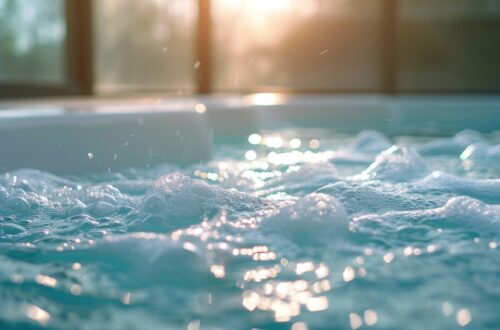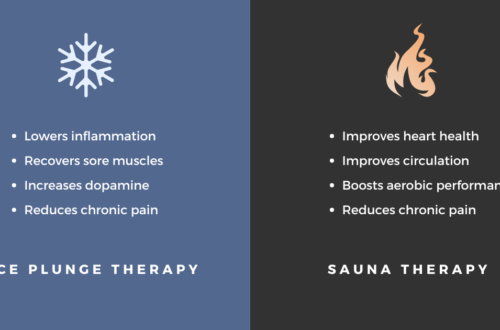If you’ve been scrolling through wellness blogs or following fitness influencers, you’ve likely seen the rising buzz around cold showers and cold plunges. Maybe you’ve even heard of people like Wim Hof, the “Iceman” who swears by his deliberate exposure to the cold. So, what’s the deal? Why is everyone suddenly embracing the chill? Let’s dive into the cool waters and compare these two methods of cold water therapy—exploring their benefits, differences, and how you can incorporate them into your own wellness routine.
The Cold Shower vs. Cold Plunge Debate
First things first: what exactly is the difference between a cold shower and a cold plunge? Both involve exposing your body to cold water, but they differ in terms of duration, intensity, and delivery.
- Cold Showers: You’re simply hopping into your regular shower and turning the temperature dial all the way down. Easy, right? Well, maybe not “easy,” but certainly accessible. Cold showers can be as brief as a quick splash, or you can endure the chill for several minutes, depending on your tolerance and goals.
- Cold Plunge: Think of a cold plunge as an immersion technique. You’ll submerge your body in cold water, often in an ice bath or specialized cold plunge tub, where the water temperature hovers around freezing—typically 50°F (10°C) or lower. This practice is more intense than a cold shower, often involving deeper cold water immersion for extended periods.
Both methods fall under the broader category of cold exposure, which is part of the larger trend of cold therapy aimed at enhancing recovery, reducing inflammation, and boosting overall well-being. But which one is right for you? Let’s break it down.
Cold Shower Benefits
Ah, the humble cold shower. While it may not sound as fancy as an ice barrel or a plunge tub, don’t underestimate its power. Here’s why people love it:
1. Improved Circulation
Cold showers work by rapidly cooling your skin, causing your body to respond by increasing blood flow to warm up your vital organs. This improved circulation can help with everything from skin health to muscle recovery.
2. Energy Boost
Need a wake-up call? Forget the coffee. A burst of cold water hitting your skin first thing in the morning jolts your system, triggering the release of adrenaline and other energizing hormones. That immediate shock to your system can also enhance alertness and clarity of mind—perfect for when you’re dragging your feet out of bed.
3. Mood Enhancement
There’s something oddly invigorating about braving the cold. Studies have shown that regular cold showers can boost endorphins, improving your mood and even helping combat symptoms of depression and anxiety. It’s like a shot of happiness wrapped in a chilly package.
4. Cold Shower for Recovery
Sore muscles after a workout? Step into a cold shower. While it’s not as intense as a full-on cold plunge, the lower temperature still helps reduce inflammation and speed up muscle recovery. Athletes often use it for quick post-workout relief.
5. Convenience
Perhaps one of the biggest perks of cold showers is their accessibility. All you need is a shower and the willpower to endure the cold. No specialized equipment, no setup, just you and the chilly water.
Cold Plunge Benefits
While cold showers are great, cold plunging takes cold water exposure to the next level. Think of it as the elite athlete of cold therapies—demanding, but rewarding. Here’s why:
1. Deep Recovery
If you’re dealing with intense muscle soreness or inflammation, a cold plunge is like the superhero you didn’t know you needed. Doing an ice bath after a workout reduces swelling, enhances recovery, and minimizes pain. The longer exposure to the cold allows your body to benefit on a deeper level than a quick cold shower. An ice bath and sauna routine together can make for the perfect recovery for athletes and wellness enthusiasts alike.
2. Heightened Cold Exposure
The full-body immersion in cold water forces your body to regulate its body temperature more effectively. This can improve your overall cold exposure tolerance, which has been shown to have various health benefits, including boosting the immune system and promoting longevity.
3. Mental Fortitude
Let’s be honest: plunging yourself into freezing water is no joke. It takes mental grit to stay submerged in that kind of cold temperature for more than a few seconds. Cold plunging is a mind-over-matter exercise, pushing your limits and helping you develop resilience and focus. The mental clarity you gain from this can be just as powerful as the physical benefits.
4. Cold Plunge Benefits for Circulation
Like cold showers, cold plunges trigger improved blood flow. But because you’re fully immersed, the effect is magnified. Your body works overtime to pump blood to your organs, which can lead to better circulation and even improvements in blood pressure.
5. Cryotherapy On a Budget
Cryotherapy chambers can be expensive and not easily accessible to everyone. Cold plunging offers similar benefits—like reducing inflammation and speeding up recovery—without the hefty price tag. An at-home ice bath or an ice barrel in your backyard is a more affordable way to reap the rewards of cold therapy.
Cold Shower vs. Cold Plunge: Which Should You Choose?
So, which method should you go for: the quick and easy cold shower, or the full-body immersion of a cold plunge? Here are a few factors to consider:
1. Your Goals
- For Recovery: If your primary goal is recovery after an intense workout, a cold plunge will give you the deeper benefits you’re looking for. It’s particularly useful for reducing soreness and speeding up healing.
- For Mental Clarity and Energy: If you’re looking for a quick pick-me-up or a daily mental boost, a cold shower might be all you need. The convenience and ease make it perfect for adding a little energy boost to your morning routine.
2. Your Tolerance to Cold
- Cold Showers: If you’re new to cold exposure, start with cold showers. They allow you to control the temperature more easily, gradually building up your tolerance over time.
- Cold Plunges: For the more adventurous or those already accustomed to cold, a cold plunge provides a greater challenge—and greater rewards.
3. Time and Access
- Cold Showers: As mentioned, cold showers are quick, easy, and accessible to just about everyone. You can even incorporate them into your daily routine with little to no preparation.
- Cold Plunges: If you’re an ice bath beginner, it’s important to know that the set requires a bit more commitment. You need to plan ahead, find the right water temperature (typically between 50°F and 60°F), and have the space and equipment to submerge yourself fully. Plus, you’re going to have to keep your ice bath clean and cold for every use.
Tips for Cold Water Immersion
Ready to take the plunge into cold therapy? Whether you’re opting for a cold shower or cold plunging, here are some tips to make the most of your cold water immersion experience:
1. Start Slow
Don’t go straight for the cold plunge tub if you’ve never dabbled in cold therapy before. Start with contrast showers—alternating between hot and cold water—to acclimate your body to the colder temperatures.
2. Breathe Through It
Channel your inner Wim Hof and focus on your breathing. The shock of the cold can make you gasp, but steadying your breath will help you endure the chill. Try inhaling deeply through your nose and exhaling slowly through your mouth.
3. Monitor Your Body
Listen to your body. If you feel numb or dizzy, it’s time to get out. Cold exposure is meant to push your limits, not harm you. Always err on the side of caution.
4. Warm Up Slowly After
After your cold water exposure, it can be tempting to jump into a hot shower or hot tub. Instead, allow your body to warm up naturally or use a warm shower to gradually bring your temperature back to normal. This allows your body to recalibrate and take full advantage of the circulatory benefits.
The Verdict: Cold Shower vs. Cold Plunge
Both cold showers and cold plunges have their unique advantages and can be powerful tools in your wellness arsenal. Ultimately, the choice comes down to your goals, lifestyle, and tolerance. Want a quick, invigorating energy boost? Stick with cold showers. Looking to enhance recovery and mental toughness? Take the plunge—literally.
But whichever you choose, there’s no denying the power of the cold. From boosting blood flow to aiding weight loss, and from improving mood to promoting resilience, cold water therapy has a place in any wellness routine. Whether you’re a seasoned cold therapy enthusiast or just starting out, ALEKO’s cold plunges are designed to elevate your wellness routine with ease and comfort. Ready to take the plunge yourself? Check out our premium cold plunges at ALEKO and experience the benefits of cold therapy firsthand!






